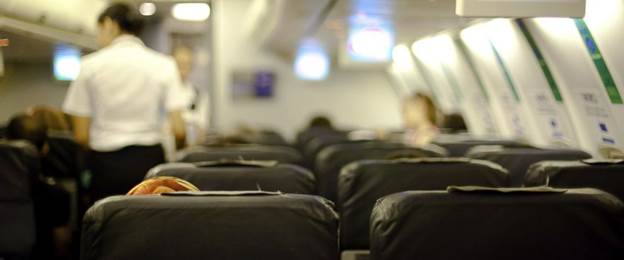Cabin crew deal with an ancient evil
29 May, 2018
3 min read


Cabin crew have been given new tools to identify an ancient evil that still stalks one in 200 people worldwide and uses air travel as a major vector for spreading misery.
The International Labour Organisation estimates about 40 million people were victims of modern slavery in 2016 with women and girls accounting for more than 70 percent of that number.
But how do you tell when someone’s nightmare is beginning?
The International Civil Aviation Organisation (ICAO) and the Office of the United Nations High Commissioner for Human Rights (OHCHR) have joined forces to help cabin crew identify victims of people trafficking.
ICAO believes the use of aircraft by international traffickers increases the likelihood airline staff will face-to-face with victims and perpetrators.
It says cabin crew members are in a unique situation where they can observe passengers over a period of time, allowing them to use their observation skills to identify potential victims.
The training provided 14 indicators to help cabin crew.
These include a person who avoids eye contact and social interaction, avoids and distrusts authority figures or law enforcement and is not in control of his or her documentation.
A victim also may not speak the same language as the person with whom they’re traveling, could have no money or personal items and be wearing clothing that does not fit the destination or weather.
The document also covers the procedures cabin crew, pilots and airlines should follow if they identify a suspect.
Read: Australian safety oversight in ICAO top six.
“The development of these joint ICAO-OHCHR guidelines will help improve the awareness of cabin crew concerning the various types of trafficking they may encounter, who the victims and perpetrators are, and the signals to be looked for to confirm a trafficking incident,” said ICAO secretary general Dr. Fang Liu.
“Critically, this document will also provide cabin crew with the reporting and response procedures should they find themselves confronting a potential trafficking situation.”
UN High Commissioner for Human Rights Zeid Ra'ad Al Hussein described the jointly produced guidelines as a powerful tool to protect and help victims of human trafficking.
“By coming together, the UN Human Rights Office, ICAO and the wider aviation sector now have the means to play a significant role in ending a despicable crime that uses and abuses people and crushes their human rights,’’ he said.
“Together, we can make a real difference in standing up for the rights of victims trapped in modern-day slavery.”
Next Article
2 min read
Qantas triples profit but misses mark

Get the latest news and updates straight to your inbox
No spam, no hassle, no fuss, just airline news direct to you.
By joining our newsletter, you agree to our Privacy Policy
Find us on social media
Comments
No comments yet, be the first to write one.
